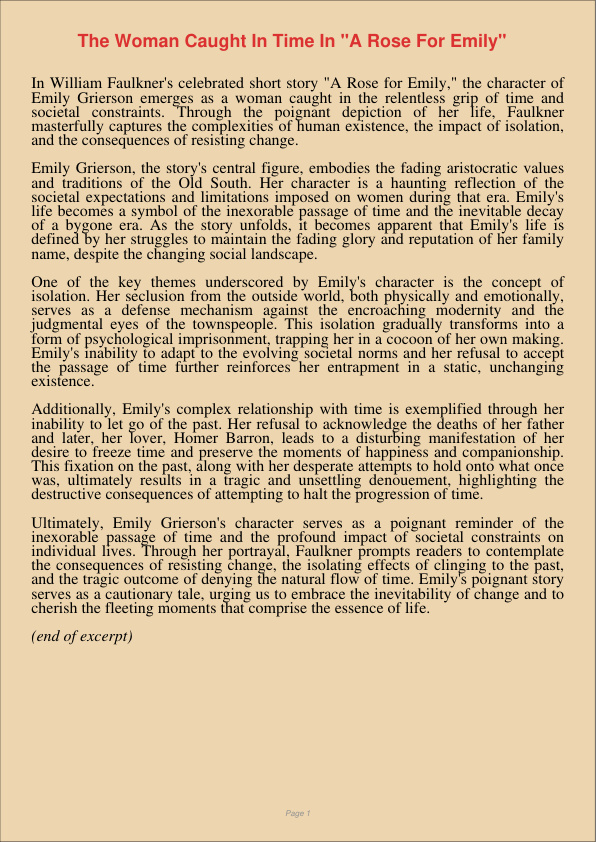The Woman Caught In Time In A Rose For Emily
Dec 31, 2023
woman caught
time
Management
Finance & Accounting

In William Faulkner’s celebrated short story “A Rose for Emily,” the character of Emily Grierson emerges as a woman caught in the relentless grip of time and societal constraints. Through the poignant depiction of her life, Faulkner masterfully captures the complexities of human existence, the impact of isolation, and the consequences of resisting change.
Emily Grierson, the story’s central figure, embodies the fading aristocratic values and traditions of the Old South. Her character is a haunting reflection of the societal expectations and limitations imposed on women during that era. Emily’s life becomes a symbol of the inexorable passage of time and the inevitable decay of a bygone era. As the story unfolds, it becomes apparent that Emily’s life is defined by her struggles to maintain the fading glory and reputation of her family name, despite the changing social landscape.
One of the key themes underscored by Emily’s character is the concept of isolation. Her seclusion from the outside world, both physically and emotionally, serves as a defense mechanism against the encroaching modernity and the judgmental eyes of the townspeople. This isolation gradually transforms into a form of psychological imprisonment, trapping her in a cocoon of her own making. Emily’s inability to adapt to the evolving societal norms and her refusal to accept the passage of time further reinforces her entrapment in a static, unchanging existence.
Additionally, Emily’s complex relationship with time is exemplified through her inability to let go of the past. Her refusal to acknowledge the deaths of her father and later, her lover, Homer Barron, leads to a disturbing manifestation of her desire to freeze time and preserve the moments of happiness and companionship. This fixation on the past, along with her desperate attempts to hold onto what once was, ultimately results in a tragic and unsettling denouement, highlighting the destructive consequences of attempting to halt the progression of time.
Ultimately, Emily Grierson’s character serves as a poignant reminder of the inexorable passage of time and the profound impact of societal constraints on individual lives. Through her portrayal, Faulkner prompts readers to contemplate the consequences of resisting change, the isolating effects of clinging to the past, and the tragic outcome of denying the natural flow of time. Emily’s poignant story serves as a cautionary tale, urging us to embrace the inevitability of change and to cherish the fleeting moments that comprise the essence of life.